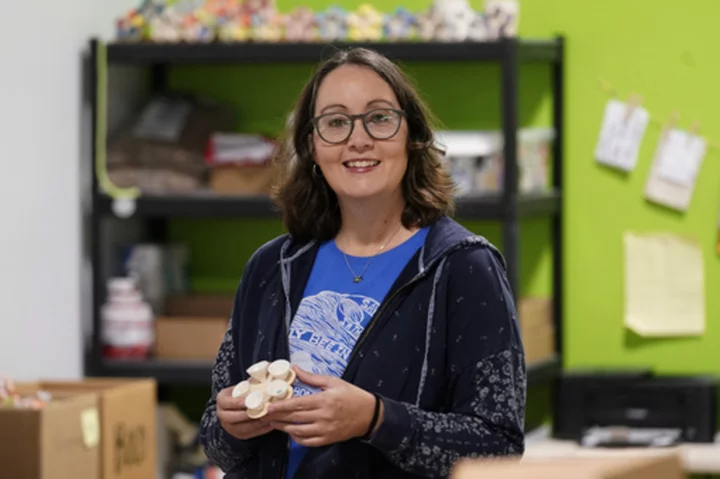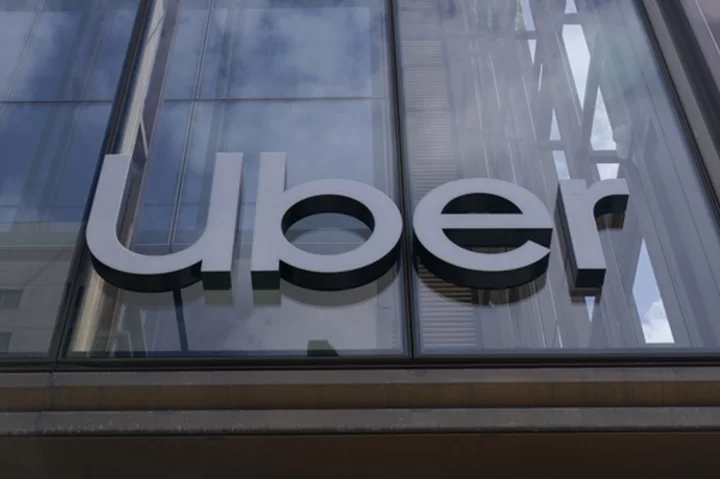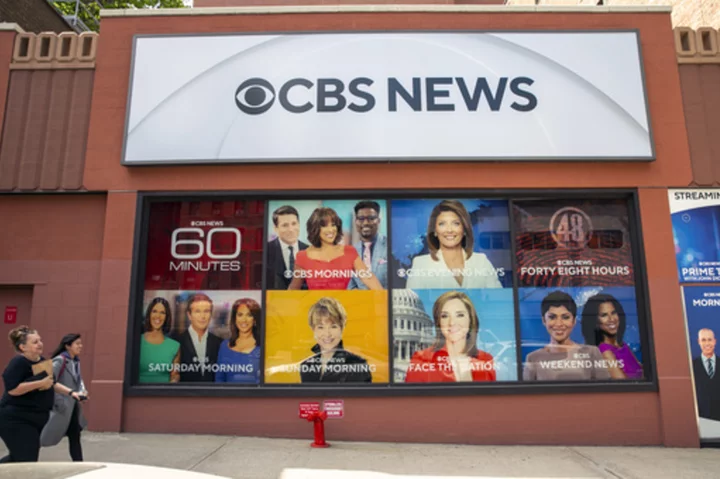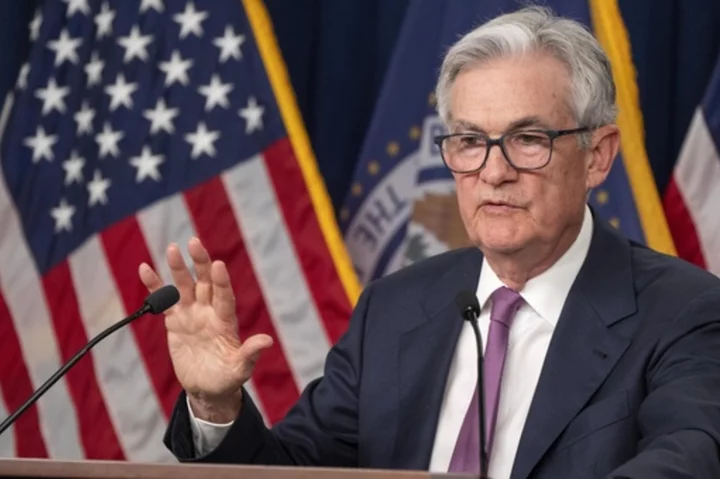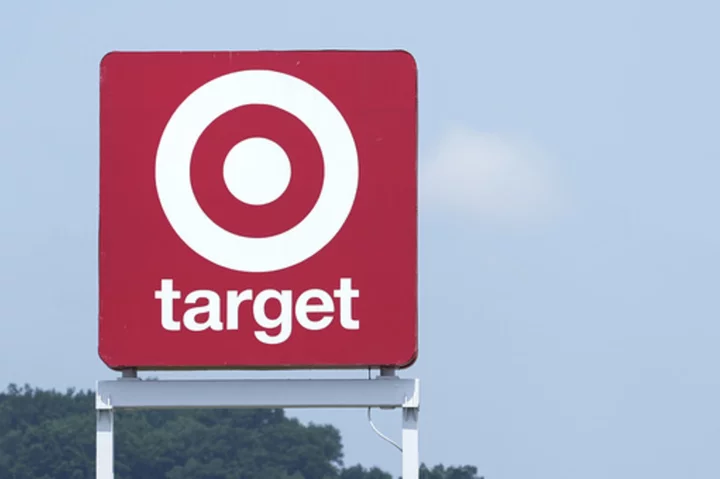NEW YORK (AP) —
Among the many challenges small businesses face as they try to grow these days, getting a loan is right near the top.
Banks big and small have tightened lending standards as the Federal Reserve hiked up interest rates the past two years. The collapse of three regional banks this spring and the possibility of stricter regulations have likely made some banks more cautious as well.
So, business owners are having to make sacrifices, from turning to crowdsourcing instead of lenders, borrowing from family or friends, or simply forgoing expansion plans that would have been funded by more capital.
According to the Federal Reserve, which surveys senior bank loan officers quarterly, about 49% of banks said they had tightened lending standards for small firms – those with less than $50 million in annual sales – during the July to September quarter, up from 22% in the same period last year. Loan officers cited an increasingly uncertain economic outlook as one reason for the tightening.
Biz2Credit data tells a similar story. Back in June 2022, big banks approved 15.4% of small business loan applications. The figure has dipped every month since and was at 13% in October. At smaller banks, about one in five funding requests were approved – far from the 50% approval rate pre-pandemic.
Meanwhile, interest rates have jumped. The average interest rate paid on short term loans was 9.1% in October, up sharply from 6.7% in the same period a year ago, and 4.9% the year before that, according to the National Federation of Independent Business.
All those factors have added up to a grim environment if you’re a small business seeking a loan.
Cheyenne Smith in Salt Lake City, Utah, founded Dakota Ridge, which makes cowboy rain boots for kids, in 2021 with savings from a previous corporate job and money borrowed from her 401(k) retirement plan, about $80,000 total.
Smith quickly realized she needed more money up front than she’d originally thought to build up her inventory. Without two years of tax returns, however, she didn’t qualify for many small business loans. Online lenders were quick to offer their services, but the terms were too strict, requiring weekly repayments or interest rates up to 40%. Online lenders approve more loans than traditional banks, but often at higher interest rates.
“It was a nightmare to try and access funding,” she said. With no other options, she borrowed about $30,000 from her mother at the end of 2022.
“A lot of people don’t have that opportunity,” she said. “And I’m very lucky, and I’m aware of that privilege to have that opportunity, not only for the cash up front from my 401(k), but also to have family members that are willing to invest.”
Higher interest rates have proven nearly insurmountable for Shantell Chambliss. She owns Nonprofitability, a consulting firm in Richmond, Va., that works with nonprofits and faith-based organizations to grow their business.
She started her business in 2017 and grew it without outside financing. This May, Chambliss came up with an expansion plan for her business that would require hiring more people and investing in technology. She realized she needed a loan to get the plan going.
Her goal was to get a $25,000 loan. Her bank, Capital One, denied her the loan but did give her a small increase for her credit card that provided $3,000 in available credit. “Not nearly enough,” she said. Her personal bank similarly turned her down.
Chambliss tried to go the non-traditional route and was approved for a larger loan of $11,500 at an online lender, but the interest rates were so high it didn’t make sense to accept, she said. The lowest rate she was quoted was 27%.
“For a small business that is not only intimidating, it’s almost impossible," she said.
For now, she’s paused the expansion plan. She’s putting plans in place for a crowdfunding effort in January, calling it the “only logical next step.”
“We're going to keep working, but right now it really just feels like being a hamster in a wheel," she said. "And I don’t feel like anyone is coming to save us.”
Some small businesses are putting off projects because of the environment. Nate Hodge co-founded Raaka Chocolate in 2010 by seeking funding from long-term investors. He’s relied on them for working capital investments since.
But post-pandemic, Hodge and his partner started seeking funding from banks and online lenders instead of their investors to do some remodeling. He was shocked by the lending environment. From online lenders, he was seeing interest rates of 19%-plus.
He turned back to his investors for private loans instead. Still, the loans weren’t enough for some renovation plans they had for their warehouse space, including putting in flooring and removing some walls.
“We had to put that off because we couldn’t find good financing,” he said. “It’s definitely frustrating. It feels kind of predatory the way that some of these (online) lenders present loans to small businesses.”
Jen Rose started her business, Bee Cups, which sells small garden installations that capture water to feed pollinators, in Dallas, Texas, out of her garage during the pandemic.
She has found loans, but it has been a struggle – and she’s seen first-hand the effect of rising rates. Seeking a $350,000 loan to buy a warehouse after she outgrew her garage, she was turned down by two banks, despite having enough money for a down payment.
She sought recommendations for other banks to try, and had success at Comerica Bank, inking a deal with an enviable 3.8% interest rate at the end of 2021.
In August she closed on a second loan with Comerica for about $400,000 for an adjoining property. But this time, credit rates had tightened and the interest rate nearly doubled to 7%.
Still, Rose said she felt like she didn’t have much choice in taking the loan, particularly since the rate is still lower than the average.
“If I could have waited a little while longer, I would have,” she said. “(But) the space came available and it was kind of like I needed to grab it if it was ever going to happen.”

